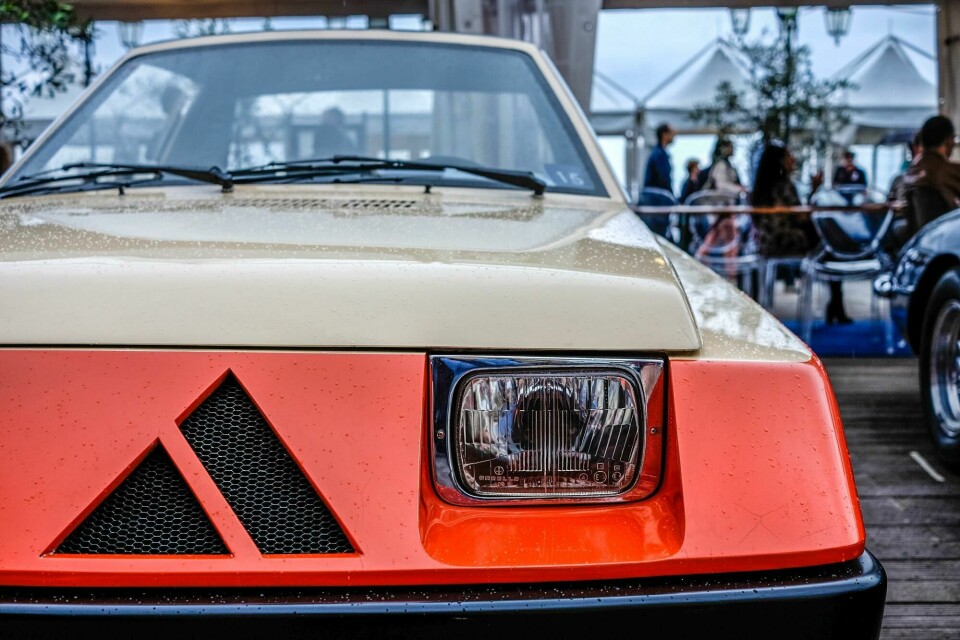
Concept Car of the Week: Autobianchi A112 Giovani (1973)
A look back at the one-off concept Pininfarina designed for new drivers in 1973
A generation ago, Autobianchi stood for innovation in packaging and engineering. Formed in 1955 as joint project by Bianchi, Pirelli, and FIAT, the small company was “the mouse that roared”, creating a limited number of models, each unique in the marketplace, and frequently serving as platforms for innovative features FIAT hoped to incorporate in future models.
The most successful of these was the A112 three-door supermini, based on a smaller version of the FIAT 128’s underpinnings, with front-wheel drive and loads of attitude. A darling of the racing circuit, it also served as a fun everyday car that competed successfully with FIAT’s more prosaic offerings.

In 1972, Pininfarina decided to take the A112 and create a fun, sporty, entry-level car. Named the Giovani – Italian for youth – the two-seat coupe was built around mostly standard A112 components, with a 982cc, 58bhp Abarth engine.

However, the body was made of interlocking fibreglass shells – one upper shell locking into the lower, for ease of manufacture. While the design and packaging of the standard A112 owed much to original Mini designer, Alec Issigonis, the Giovani was pure, contemporary Italian with its wedgey angles and crisp squared-off forms.

Indeed, from the side the Giovani looked like a cubist version of the FIAT Topolino – complete with the ghost of an old-school fender line on the black underside of the car.

But the Giovani’s design also recalled American dune buggies, helped by promotional photographs by Pininfarina that showed the Giovani being driven on the beach.
Although based on a supermini, the Giovani featured sports-car proportions – a long(ish) hood, two-seat cockpit, and short – in this case virtually non-existent –rear deck.
The hood terminated in a broad fibreglass fascia that sat between two rectangular headlights. Aside from the lamps, the only opening was the triangular stylised Autobianchi logo that served as the radiator grille. Below this was a pair of black plastic bumpers which matched the underbody and rear bumpers: an early instance of bumper/body colour coordination.

The side view of the car evoked the aforementioned Topolino, but in a more abstract way, and with a broad beltline. This beltline would form a strong perimeter line that ran all around the car. The large B-pillar was trapezoidal in shape, its angularity punctuated by the another appearance of the Autobianchi ‘A’ logo. The B-pillar contained a roll bar, while the one-piece roof could be removed.

At the rear of the roof, the rear window sloped steeply down to the rear fascia and the black plastic bumper. The only break in the slope was the wide beltline which bent around from the sides of the car and suggested a rear deck where in fact there was none. The rear suggests a full hatch to access the interior storage, but to save weight only a small trunk lid was cut into the fibreglass shell.

The interior was an interesting mix of high design and standard parts. Five analogue gauges, along with the steering wheel, door hardware, wipers and other components were sourced from the standard Autobianchi parts catalogue.

A plastic IP helped save weight. The two seats were steel frames covered with a soft spongy plastic found on boat seats. This plastic was used on the door trim as well. The B-pillar sheltered an open cargo area accessible from the interior or the small rear luggage space.

The Giovani was introduced at the Geneva motor show in 1973, and was well received by both the press and the public. Yet despite this warm reception, and a design that had been produced with immediate production in mind, the Giovani was destined to remain a concept.

Fortunately, the Giovani prototype is preserved, living on in the private collection of Corrado Lopresto, who also owns the Lancia Stola and the Lancia Sibilio concepts, as well as a priceless collection of other Italian classics. The Giovani was also recently seen, looking as good as new, at the Pininfarina Concours D’Elegance, where it shared a weekend with other classics from that storied carrozzeria.






























